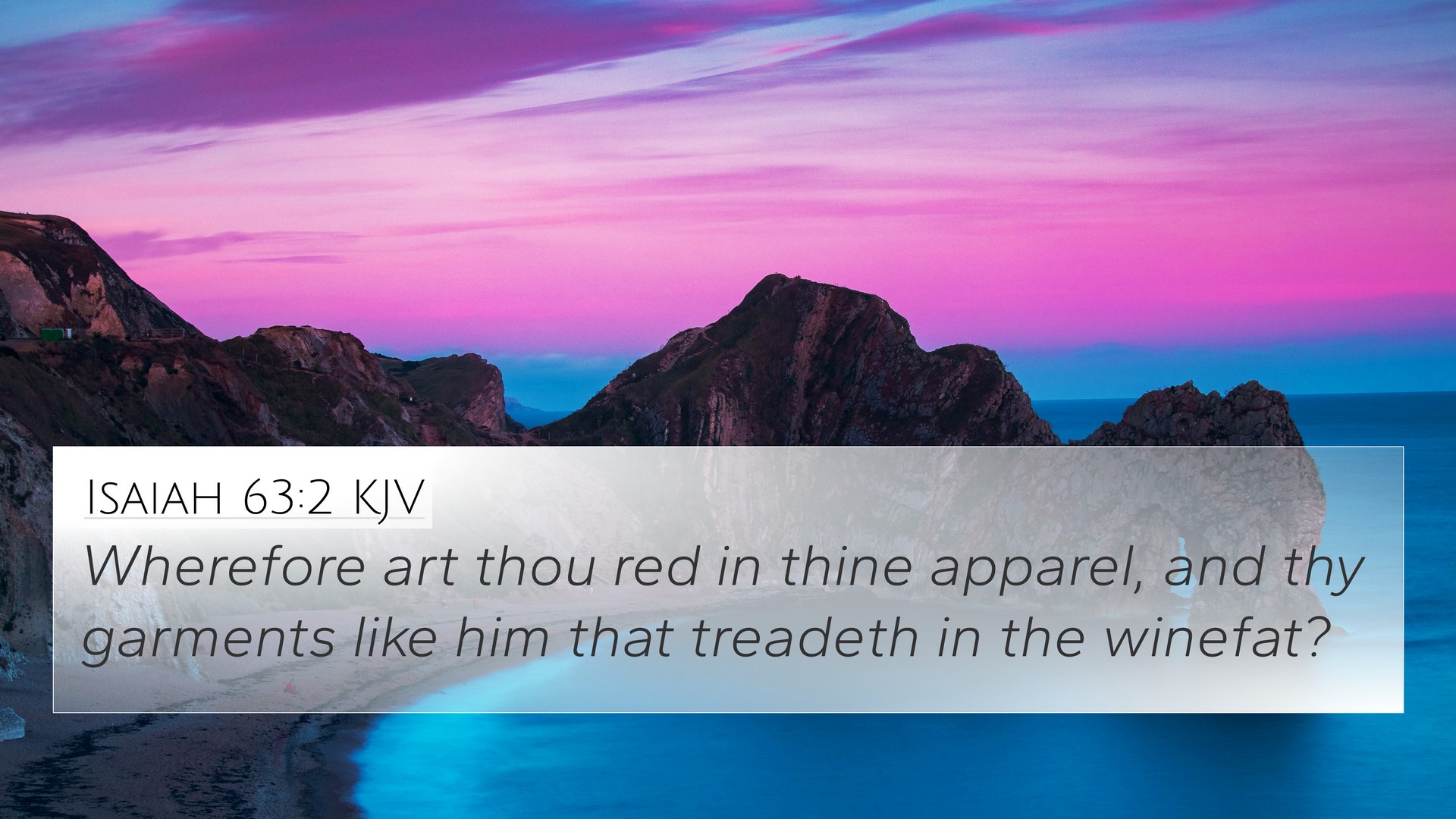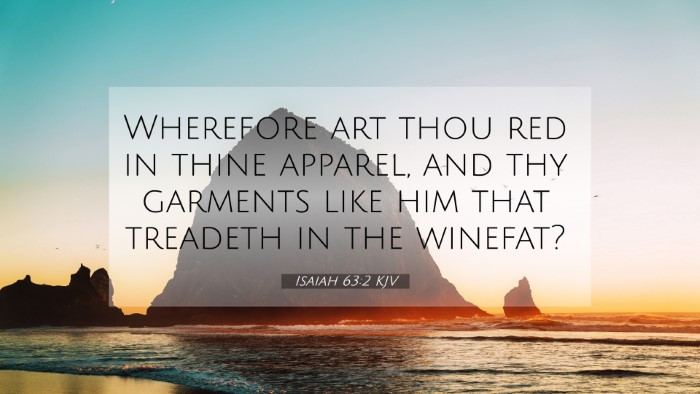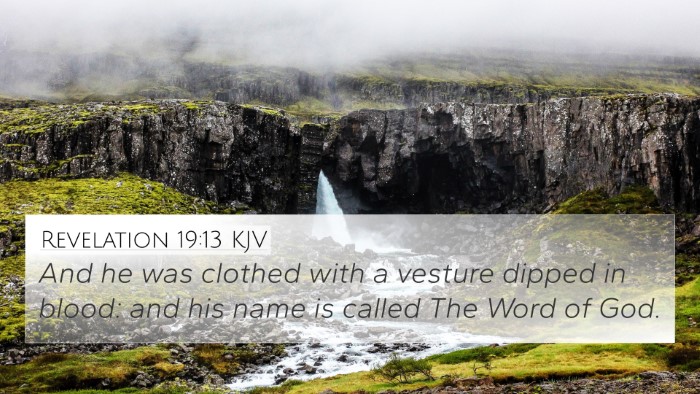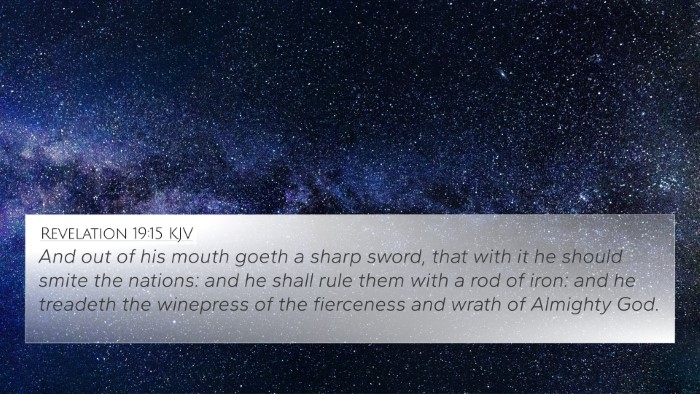Understanding Isaiah 63:2
Verse Reference: Isaiah 63:2
Isaiah 63:2 poses a significant imagery that reflects God's judgment and His relationship with humanity. This verse presents a vivid metaphor, depicting the Lord's mighty intervention and salvific work. The phrasing, "Wherefore art thou red in thine apparel?" implies an intense, almost jarring, visual that invites deeper contemplation about the nature of divine retribution and grace.
Meaning and Interpretation
The verse reads: "Wherefore art thou red in thine apparel, and thy garments like him that treadeth in the winefat?" (Isaiah 63:2). This imagery signifies the act of judgment, comparing God's actions to that of a vintner treading grapes in a winepress, which results in the staining of clothing with the red juice of the grapes.
Insights from Public Domain Commentaries
The following are insights drawn from renowned commentaries to provide a clearer understanding:
- Matthew Henry: Henry highlights God's anger against His enemies, noting that the 'red' symbolizes both wrath and the victory He achieves for His people. He emphasizes that the treading represents a decisive action against the oppressors.
- Albert Barnes: Barnes focuses on the significance of God's attire colored red, relating it to the bloodshed that accompanies divine justice. He notes that this verse metaphorically conveys the suffering that precedes redemption, connecting it with God's eventual deliverance of His people.
- Adam Clarke: Clarke discusses how this imagery may also reflect the triumph of God over adversaries. He suggests that the garments represent the lifeblood of those who oppose Him, metaphorically illustrating God's victory through His strength and enduring fidelity to His people.
Bible Verse Cross-References
To deepen the understanding of Isaiah 63:2, cross-referencing it with other scriptures is invaluable. Below are notable connections:
- Revelation 19:13: "And he was clothed with a vesture dipped in blood: and his name is called The Word of God." - This verse parallels the imagery of garments stained red, emphasizing the theme of judgment and victory.
- Isaiah 34:6: "The sword of the LORD is filled with blood, it is made fat with fatness." - This reinforces the theme of divine judgment and the consequences faced by nations opposing God.
- Hebrews 9:22: "And almost all things are by the law purged with blood; and without shedding of blood is no remission." - Relating to the necessity of blood for redemption, echoing themes in Isaiah 63:2 concerning sacrificial justice.
- Psalm 60:3: "Thou hast showed thy people hard things." - This reflects the anguish experienced in divine operations, akin to the redemption narrative implied in Isaiah 63:2.
- Zephaniah 1:7: "Hold thy peace at the presence of the Lord GOD: for the day of the LORD is at hand..." - This verse underlines the anticipation of God's intervention in history, resonating with the call for justice as depicted in Isaiah.
- Lamentations 3:33: "For he doth not afflict willingly nor grieve the children of men." - This connects with the understanding that God's actions, though severe, are born from a place of righteousness rather than baseless anger.
- 1 Peter 1:19: "But with the precious blood of Christ, as of a lamb without blemish and without spot." - Offers insight into the ultimate sacrifice, paralleling the concept of blood representing both judgment and hope.
- Matthew 21:33-41: The parable of the vineyard reflects God's expectation of fruitfulness from His people and the consequences of failure, paralleling divine retribution present in Isaiah's message.
- Romans 12:19: “Vengeance is mine; I will repay, saith the Lord.” - This verse reinforces the theme of divine justice and the assurance that God will act against injustice.
- Isaiah 61:2: "To proclaim the acceptable year of the Lord, and the day of vengeance of our God; to comfort all that mourn." - This verse contrasts the themes of judgment and comfort offered to those who remain faithful.
Thematic Connections
Exploring the thematic connections between Isaiah 63:2 and its cross-references reveals the layered meanings of wrath, redemption, and assurance of divine justice. Understanding these themes offers deeper insights into God's character and His sovereign purposes for humanity.
Tools for Cross-Referencing
Utilizing cross-references is vital for a comprehensive study of scripture. Here are some tools and methods to enhance the understanding of the Bible:
- Bible Concordance: A tool that helps locate words and their occurrences in the scripture, facilitating study connections.
- Bible Cross-Reference Guide: Provides lists of verses that relate to specific themes or topics, enhancing comparative analysis.
- Cross-Reference Bible Study: A method of studying related verses together for thematic insights.
- Bible Reference Resources: Collections of scholarly resources or commentaries that offer insights on scripture.
- Comprehensive Bible Cross-Reference Materials: Detailed books or online resources that provide extensive cross-references to assist theological studies.
Conclusion
Isaiah 63:2 serves as a profound reminder of the dual nature of divine justice and grace. By engaging with the rich imagery and exploring cross-references, one can gain deeper insights into the message of this prophetic verse. The ongoing dialogue between the Old and New Testaments highlights the interconnectedness of scripture and God's enduring plan for humanity.
Further Studies
For those seeking deeper understanding, consider exploring how these connections inform broader biblical themes and contribute to sermon preparations or personal reflections.




